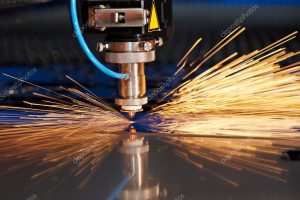 Precision laser cutting services are instrumental in the fabrication of parts and components for many products. Cutting of material itself is a fundamental process, essential to shape components to desired dimensions for assembly. Laser cutting is a technology that offers many advantages to manufacturers over other methods of conventional cutting of material such as mechanical cutting or waterjet cutting. It benefits many industries—medical, automotive, aerospace, electronics, and consumer goods.
Precision laser cutting services are instrumental in the fabrication of parts and components for many products. Cutting of material itself is a fundamental process, essential to shape components to desired dimensions for assembly. Laser cutting is a technology that offers many advantages to manufacturers over other methods of conventional cutting of material such as mechanical cutting or waterjet cutting. It benefits many industries—medical, automotive, aerospace, electronics, and consumer goods.
How Precision Laser Cutting Services are the Perfect Solution
Design requirements of parts and components for products have broadened dramatically over the past decades. Many assemblies are now composed of much smaller and more intricate components that require precision cuts with tighter tolerances. Precision laser cutting services offer the perfect solution. The fabrication of custom-designed pieces can now be produced more efficiently with greater precision than in the past.
The laser cutting process utilizes a focused, high-powered laser beam that can cut through the material to produce custom shapes and designs. Not only is laser cutting an efficient way to cut material, but it is also well-suited to cut a wide selection of materials. Plastics, textiles, composites, glass, acrylic, leather, ceramic, melamine, paper, fiberglass, gemstones, metals, and much more can be cut with precision into complex parts without custom-designed tooling.
With the capability to cut a wide range of shapes and designs with greater precision and accuracy, laser cutting services offer manufacturers several benefits over other conventional cutting machines. Chief among them, the process can produce cost-effective components to exact specifications, with high-quality, smooth-edged finishes, and do it safely with consistency, and less material, damage, and waste.
Laser cutting offers higher precision, quality, accuracy, and speed than traditional methods of cutting. The laser provides no push, pull, or drag force to bend or flex the material when cutting. Keep in mind that there is no physical contact with the material. A laser is a highly focused beam that cuts with extremely fine control and trims to tolerances of .001″ with minimal thermal output.
The precision of laser cutting machines is controlled through CNC (computer numerical control) automated processes. Continuous and consistent CNC cutting produces complex and intricate parts at high tolerances. Such laser cutting precision also produces smooth edges that generally do not require further cleaning, treating or any need for additional finishing processes associated with other cutting methods. The laser beam’s focus produces tighter tolerances and a smaller, narrower kerf width when cutting. A smaller kerf width reduces the amount of material removed and decreases the extent of thermal distortion. Therefore, heating of material is localized and minimal, preserving the bulk of the material. As there is no contact with the material, the process further reduces mechanical distortion risk, especially with thinner materials.
The Efficiencies of Opting for Precision Laser Cutting
Combined, the result of laser cutting adds up to savings. Tighter tolerances, narrower kerf widths, and lower heat-affected zones allow laser cuts of material to be arranged closer together. The close proximity of cutting then reduces the amount of material waste, which, in turn, lowers material costs over time.
For industries, precision laser cutting services have opened up design possibilities once considered near impossible to achieve. The precision produces exceptionally high levels of repeat accuracy, too, with a wide degree of flexibility in contours’ choice without any tool wear. Laser cutting services are precise and intricate, with results leading to finer detail on a wider range of materials. With extreme precision and smooth-edged finishes, laser cuts’ intricacy makes for the nearly limitless parts’ design.
